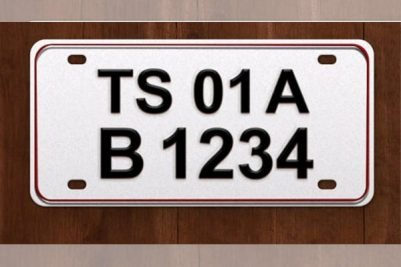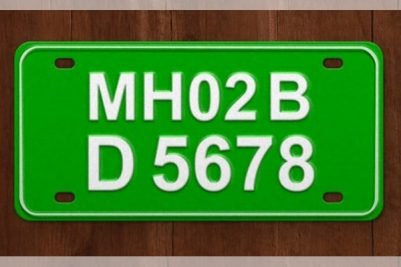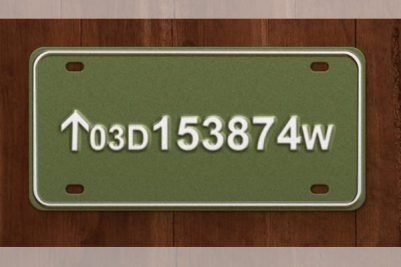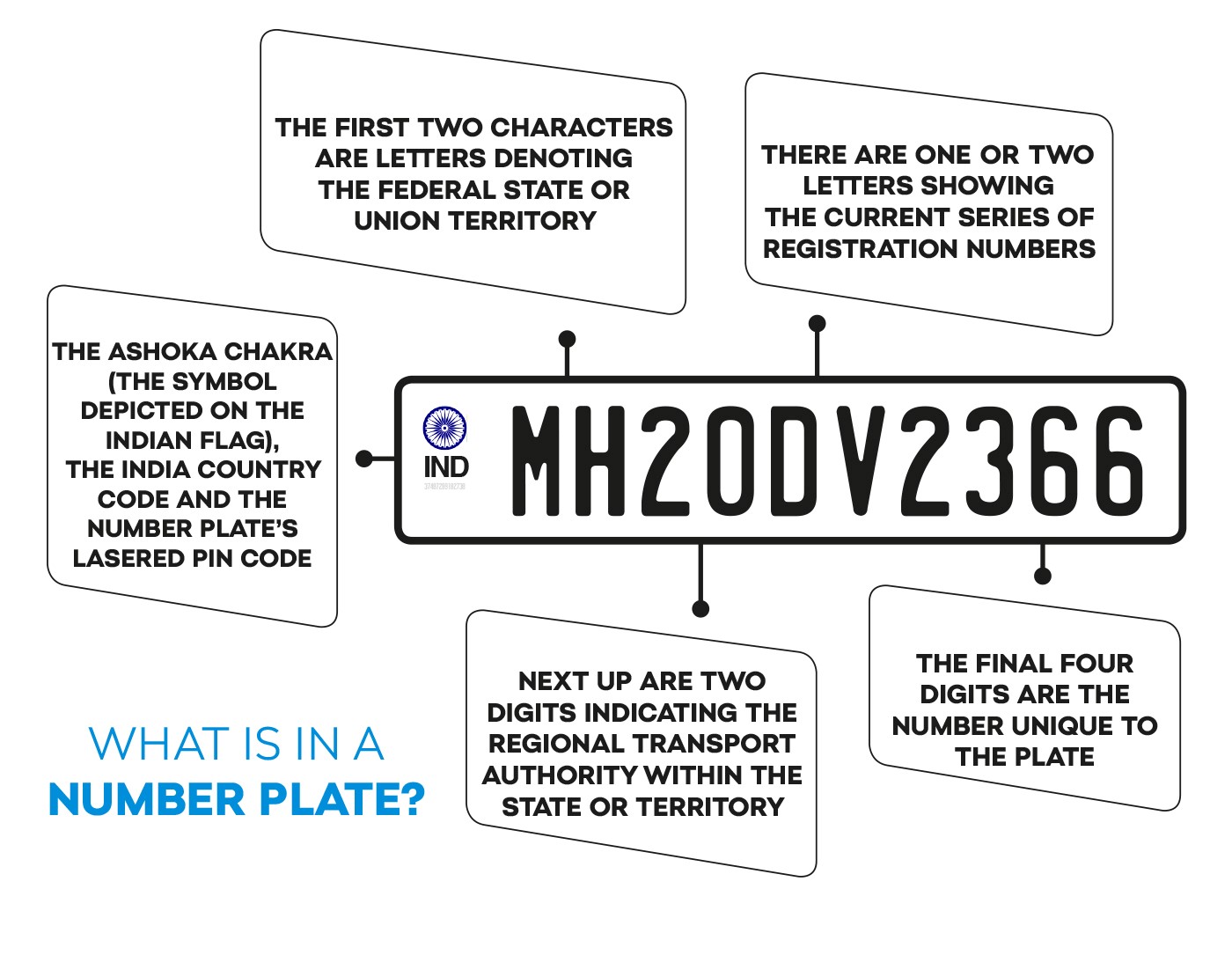While the white plate with black lettering is the most commonly used one, there are several kinds of number plates that one might witness every now and then.
How does the Indian registration-number system cope with such huge numbers of people and the vehicles they drive? The solution, it would seem, is simple. More characters. While ordinary Czech and British registration numbers consist of seven characters, ten characters are the norm in India – four are usually letters and the rest are digits.

The first two characters of an Indian registration number are letters denoting the federal state or union territory, of which there are 36 in India. Next up are two digits indicating the regional transport authority within the state or territory that issued the registration number. After that, there are one, two or three letters showing the current series of registration numbers. The final four digits are the number unique to the plate. The last feature of a number plate is the IND sign on the left. Above that is Ashoka Chakra (the symbol depicted on the Indian flag), and below it is the number plate’s lasered PIN code. Some states and territories (such as the National Capital Territory of Delhi) add an extra letter before the series explained above in order to designate the vehicle type. Each state can use its own set of codes for this purpose. Delhi, for example, makes a distinction between motorbikes, cars, electric vehicles, public transport vehicles, three-wheeled rickshaws, taxis, pick-up trucks, and rental vehicles.
Indian number plates come in five different colour combinations. Plates for private vehicles have black lettering on a white background. Commercial vehicles, such as taxis, buses and lorries, have black lettering on a yellow background. Yellow lettering on a black background is used to denote a vehicle rental. White lettering on a light blue background indicates that the vehicle belongs to a foreign embassy or consulate. The latest addition to the family of Indian number plates is plates for vehicles running on electricity, which have white lettering on a green background. On top of all that, there is a sixth form of number plate that happens to be quite special and very exclusive. It features the state emblem of India in gold on a red background. If you ever see a car with this number plate, you will know that you have encountered the car of the Indian president or one of the governors of a federal state or union territory.
Besides standard registration numbers, India also offers vanity plates, though the options available are rather limited – the only bits customers can choose are the last four digits and the series of the number plate. Only numbers that have never been used are on offer.
Since 2005, India has had a law on new, secure number plates. However, implementation has been very slow and has yet to be completed in some federal states. New number plates have special security features enabling them to be fitted and removed only with a special device. If they are tampered with, the plates should become unusable, and in these cases it will also be impossible to fit different plates on the vehicle.
Another security element is a third registration mark – a hologram sticker that is affixed to the windscreen and contains the registration number, the number of the transport authority issuing the plate, the engine number, the body number and a lasered PIN code, which is also on both plates. The PIN can be read with a special laser camera and, in combination with the sticker that is non-transferable and becomes unusable if removed, is one of the main elements of the whole security system. The aim is to improve the protection of vehicles from theft and to prevent criminals from using stolen number plates for their activities.

Have you come across a green number plate on a vehicle lately? Have you wondered what it meant? How about a blue one with peculiar codes that aren’t commonly used in the country?
While the white plate with black lettering is the most commonly used one, there are several kinds of number plates that one might witness every now and then. Here’s a breakout of different kids of number plates, read on to find out what each one indicates.
Black plate with yellow letters:

Self-driven rental vehicles come with black plates with yellow letters on them. These plates are found on vehicles that can be utilised for commercial purpose without commercial driving permit. Zoom cars is the best example for this kind.
Yellow plate with black letters:

Yellow plates with black letters are assigned for commercial vehicles. These vehicles are utilised for transport goods, passengers. Your Ola and Uber cabs fall under this category.
White plate with black letters:

Most commonly found plates, the white ones with black lettering. These are assigned for private or non-commercial cars and cannot be used for commercial purposes like transporting goods, ferrying passengers etc.
Green plate with white letters:

These ones are fairly new on the roads, green plates with white lettering indicates an Electric Vehicle. This is applicable to road-legal electric busses and other electric commercial vehicles, like Mahindra e20, Tata Tigor Electric.
Blue plates with white letters:

White letters on blue plates denote vehicles used by/for foreign diplomats. These plates indicate the diplomat’s country code instead of the state’s code
Number plate with an upward-pointing arrow:

Vehicles bearing these number plates are military vehicle registered with the Ministry of Defence in New Delhi. These registration plates have an upward pointing arrow after the first or the second character, which is known as Broad Arrow. The digits succeeding the arrow denote the year in which the vehicle was procured. The next is the base code, followed by the serial number. The letter ending after the serial number indicates the class of the vehicle.
Red number plate with white letters is used as a temporary registration for a brand new vehicle until permanent registration is issued by the RTO. Temporary registration is valid for 1 month only. However, all Indian states do not allow temporarily registered vehicles to ply on roads.



No comments:
Post a Comment